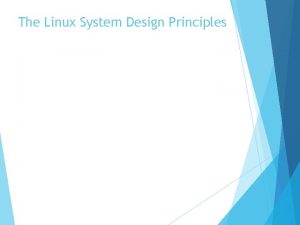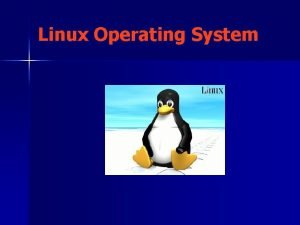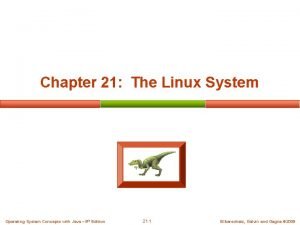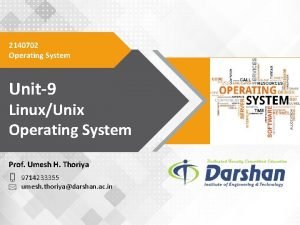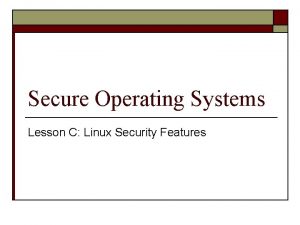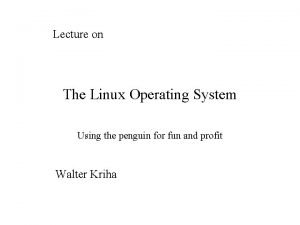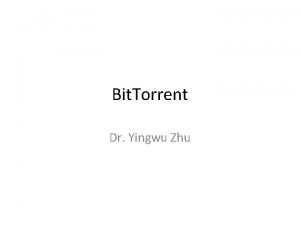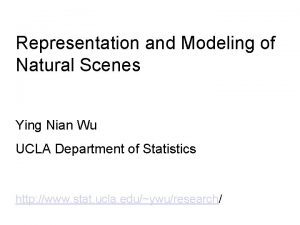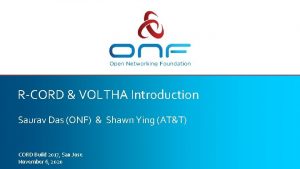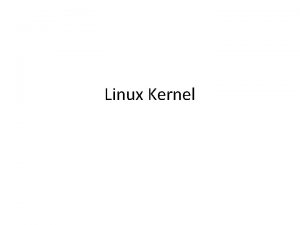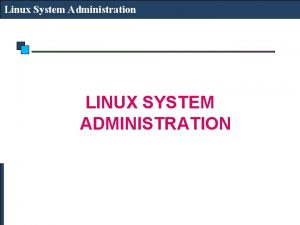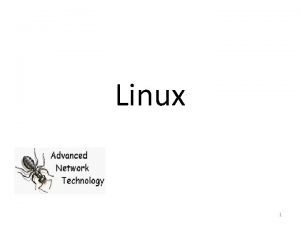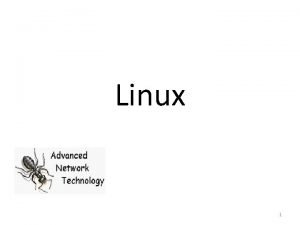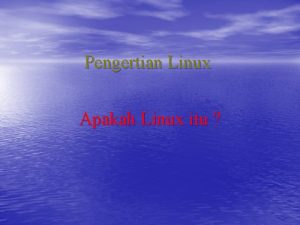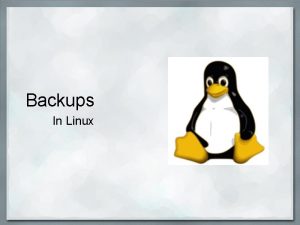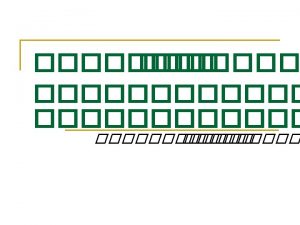A Study on Linux Operating System Ying Jiang










- Slides: 10

A Study on Linux Operating System Ying Jiang ID: 123534

Overview l l l l History Open Source Kernel/Distributions System Features Advantages Disadvantages Linux vs. NT

History l l l Linux is an UNIX-like operating system originally created by Linus Torvalds (Finland) Linus had an interest in Minix, and decided to develop a system that exceeded the Minix standards He began his work in 1991 when he released version 0. 02 and worked steadily until 1994 when version 1. 0 of the Linux Kernel was released Today Linux is the number one UNIX type operating system used in Germany and the number two UNIX type in the world

Open Source l What is open source? all of the code for the system can be downloaded and removed or modified by anyone who wishes, or is able to do so l advantages of open source a large number of software authors and beta testers no pressure to release Programs conform to ones needs rather than user to software

Kernel/Distributions l l Kernel project is the centralized controlling agent The kernel design is modular, so that the actual OS code is very small yet able to load whatever functionality it needs, and free the memory afterwards Various people and firms have gotten together to produce these CD-ROM collections which are known as distributions Commercial distributors: Red. Hat, Su. SE, Caldera, Mandrake. Soft

System Features l l Preemptive multitasking Multi-user Fully protected mode (unlike Microsoft Windows) Co-existence l File system Networking protocols l NFS (network file sharing) l

Advantages l Cost Linux is entirely free of cost and license free Power and Customization Linux can be tailored to your specific hardware and software needs Security l Very few viruses have hit Linux systems Stability l l Linux almost never freezes under normal use

Disadvantages l l l Technical nature Linux is not for everyone Support There is no central body to which one can go for support and expect prompt results Maintenance functions are not always well documented, and can be frustrating to a new administrator Interface Windows and Mac. OS have a GUI , Linux have sported a CLI Accountability Use of the Linux OS is strictly at-your-own-risk

Linux vs. NT Category Windows NT Red. Hat Linux 6. 2 Platforms 386, 486 and higher, Alpha 386 and higher, Digital Alpha, Sparc, Ultra. Sparc, PPC, Strong. ARM CPU 486 or above 386 or above Max file size Pricing 2 GB on FAT partitions, 64 GB on NTFS pay-ware, client computers accessing an NT server need to buy a separate license called a 16 TB (16, 000 GB) Free "Client Access License". GUI Viewable on opposing machine. No Yes

Conclusion l l l Due to its reliability, ease of personal configuration, and general philosophy, Linux has moved to the forerunner in the market to challenge the giant Microsoft As computing moves into the future, Linux will continue to gain ground as it continuously is improved and built upon Soon Linux will not only be for the technically minded individuals, but usable and understandable by the moderately experienced computer user
